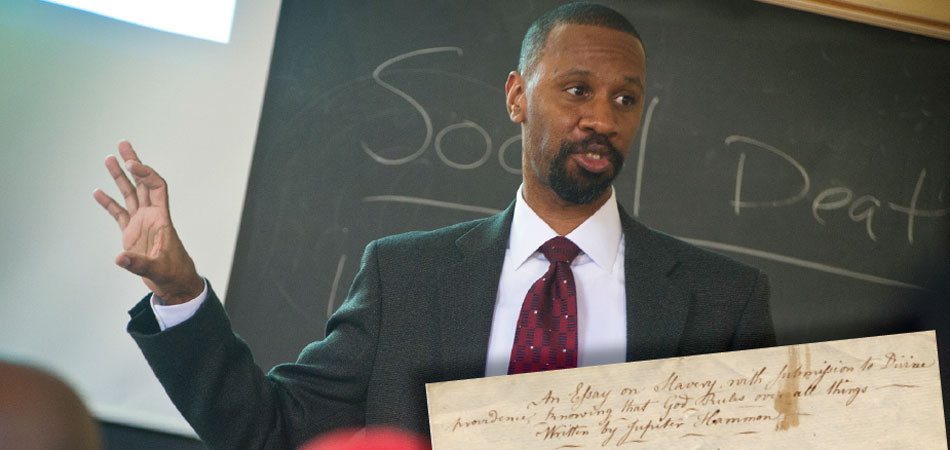Manuscript
Uncovering a Forgotten Literary Treasure
Newly discovered work by nation's first published African-American poet leads to shift in understanding of his views

Cedrick May stumbled upon one of Jupiter Hammon's previously unknown poems.
People who follow early African-American literature likely know the names Phillis Wheatley, W.E.B. Du Bois, Richard Wright, and Langston Hughes. But what about Jupiter Hammon? More than 200 years after Hammon’s death, Cedrick May is helping bring attention to the important writer, as the English associate professor recently discovered a previously unknown, handwritten poem that challenges what scholars know about him.
It was a serendipitous finding. In the fall of 2011, Dr. May instructed his graduate students to acquire scanned images of Hammon’s writings from various libraries and archives. A librarian at the New York Public Library helpfully pointed one student toward Yale’s collection. There, among 80 boxes of documents donated by the Hillhouse family in the early 1940s, was a listing for a poem by Jupiter Hammon called “An Essay on Slavery.”
“I purchased a scanned image of the poem, and when it arrived I knew right away I was looking at a never-before-known poem by Jupiter Hammon,” May says. “There are many features of the artifact that merit mention, but the most important find for historical purposes is the shift in Hammon’s thinking about the nature of slavery itself.”
Hammon spent his entire life in bondage, but unlike most other slaves at the time, he was allowed to learn to read and write. He was a devout Christian and most of his works focused on religion and spirituality, skirting around the issue of slavery. But in “An Essay on Slavery,” for the first time, Hammon declares—unambiguously—that slavery is the work of man and not the will of God:
Dark and dismal was the Day
When slavery began
All humble thoughts were put away
Then slaves were made by Man.
“And that’s a real big issue at this point, because theologically speaking, there had been a lot of talk about the compatibility of slavery with Christianity in the colonies, and now he’s defying that idea,” May explains. “This will be a game-changer in the field of early American literature.”
The full poem was published in June 2013 in the journal Early American Literature. May is currently working on a scholarly edition of Jupiter Hammon’s poetry and prose.

















